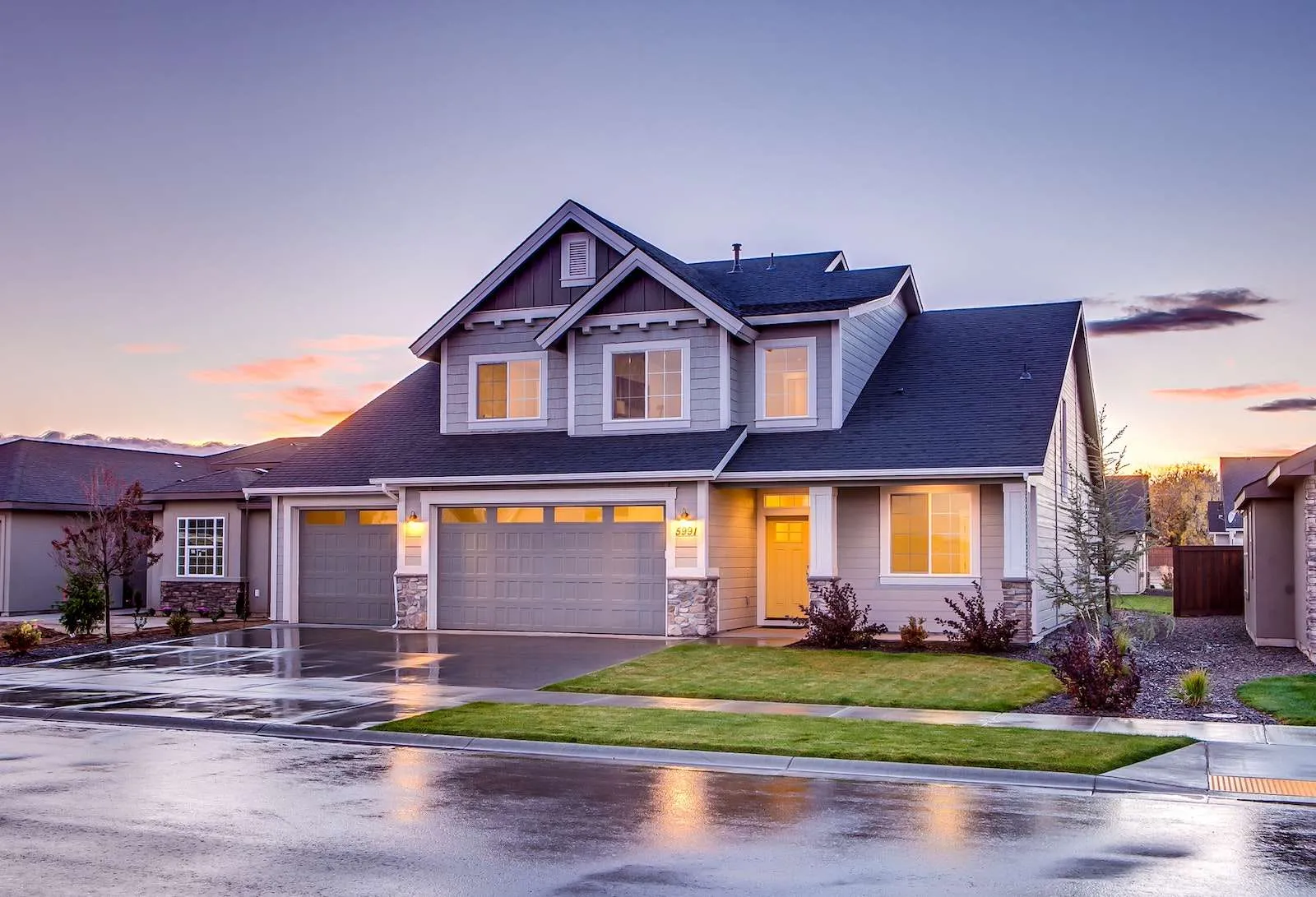Roofing is a crucial aspect of any construction or renovation project, and choosing the right roofing material is paramount. A durable roofing material not only provides protection from the elements but also ensures longevity, minimizing maintenance costs and potential damage. Consequently, it is essential to understand the lifespan of different roofing materials to make an informed decision.
In this article, we will compare several popular roofing materials and evaluate their longevity. By delving into the intricacies of asphalt shingles, metal roofing, clay or concrete tiles, slate roofing, and wood shakes or shingles, we aim to provide readers with a comprehensive understanding of which option lasts the longest.
Importance of Choosing a Durable Roofing Material
When investing in a new roof or repairing an existing one, durability should be at the forefront of your considerations. A durable roof withstands various weather conditions such as heavy rainstorms, strong winds, hailstorms, and extreme temperatures without succumbing to damage.
It acts as a shield for your house against external elements that may compromise its structural integrity if allowed entry through leaks or weak spots in the roof. Moreover, a durable roof reduces long-term costs by minimizing repair expenses and avoiding frequent replacements that can disrupt household routines.
Overview of Popular Roofing Materials to be Compared
To determine which roofing material offers the longest lifespan and best suits your needs, it’s important to examine each option individually before making an informed decision. The popular choices we will discuss are asphalt shingles, metal roofing (including steel, aluminum, and copper), clay or concrete tiles, slate roofing (known for its exceptional longevity), and wood shakes or shingles (traditional yet enduring).
Each material possesses distinct characteristics that influence its performance over time: composition factors affecting durability; resistance against environmental stressors like UV radiation; susceptibility to corrosion or decay; installation requirements; and maintenance practices. By comprehensively comparing these materials, we will elucidate the factors that contribute to their respective lifespans and help you choose the best roofing material for your specific circumstances.
High-level overview of popular roofing materials
Asphalt shingles
Asphalt shingles are the most commonly used roofing material in residential construction due to their affordability and versatility. These shingles are composed of a fiberglass or organic mat coated with asphalt and mineral granules, providing protection against weather elements. During the manufacturing process, a waterproof asphalt layer is applied over the mat, followed by the embedding of ceramic-coated mineral granules for added durability and aesthetic appeal.
The average lifespan of asphalt shingles varies depending on various factors such as climate, maintenance, and quality. Generally, fiberglass-based asphalt shingles can last between 15 to 30 years, while organic-based ones have a slightly shorter lifespan of around 10 to 25 years.
Metal roofing
Metal roofing has gained popularity due to its remarkable durability and longevity. The most commonly used metals in metal roofing include steel, aluminum, and copper. Steel is often galvanized or coated with zinc or other protective layers to prevent corrosion.
Aluminum is lightweight yet robust and highly resistant to rusting. Copper is known for its elegance and exceptional resistance against corrosion over time.
Metal roofs have numerous advantages in terms of longevity; they can often last for over 50 years with proper installation and maintenance practices. However, it’s important to note that poor installation techniques or exposure to harsh environmental conditions can reduce their lifespan.
Clay or concrete tiles
Clay or concrete tiles provide a distinct aesthetic appeal while offering excellent durability against weather elements. These tiles are made by firing clay or blending concrete with water into desired shapes and then heating them at high temperatures until hardened. Clay tiles are known for their timeless beauty and ability to withstand extreme temperatures while maintaining their structural integrity.
Concrete tiles offer similar benefits but tend to be more affordable compared to clay alternatives. The longevity of clay or concrete tiles depends on various factors, including climatic conditions.
In regions with mild climates, these tiles can last for 50 to 100 years or even longer. However, in areas with frequent freeze-thaw cycles or high winds, the lifespan may be slightly reduced.
Proper installation techniques and regular maintenance are crucial to maximize their longevity and prevent any premature aging or damage. Adding descriptive subtitles helps organize the content and clearly defines each subsection for easier navigation through the article.
Asphalt Shingles
Three-tab vs architectural shingles: which lasts longer?
When comparing the longevity of three-tab and architectural shingles, it is important to consider their design and composition. Three-tab shingles are thinner and lighter, typically consisting of a single layer of asphalt. On the other hand, architectural shingles are thicker and more dimensionally layered, with added fiberglass or organic mat for reinforcement.
Due to their enhanced construction, architectural shingles tend to have a longer lifespan compared to three-tab shingles. While three-tab shingles usually last around 15-20 years, architectural shingles can endure for 30-50 years if properly maintained.
Impact resistance and wind ratings affecting lifespan
The impact resistance and wind ratings of asphalt shingles significantly affect their durability over time. Some asphalt shingle manufacturers produce products that are specifically designed to withstand high winds and hailstorms. These impact-resistant varieties have reinforcements like rubberized polymers or modified asphalt that increase their resilience against impacts from debris or heavy hailstones.
Additionally, wind ratings indicate the maximum wind speeds that the roofing material can withstand without getting dislodged or damaged. Choosing asphalt shingle options with higher wind ratings provides added protection against wind-related wear and tear, thereby extending the overall lifespan of the roof.
Metal Roofing
Corrosion resistance and its impact on longevity
Corrosion can be a significant concern when it comes to metal roofing materials since exposure to moisture over time may cause rusting or degradation. However, various types of metal used in roofing construction offer different levels of corrosion resistance.
For example, steel is prone to rusting if not properly coated or treated with protective layers such as zinc or galvalume coatings. Aluminum, on the other hand, naturally forms an oxide layer that protects it from corrosion.
Copper, known for its exceptional durability, develops a patina over time that acts as a protective barrier against corrosion. By selecting metals with higher resistance to corrosion and implementing regular maintenance practices, the lifespan of metal roofing can be significantly prolonged.
Coatings and finishes that enhance durability
Coatings and finishes play a crucial role in enhancing the durability of metal roofing materials. One commonly used coating is paint that helps protect against fading caused by UV radiation and provides an additional layer of defense against corrosion. Kynar 500 or silicone-modified polyester paints are often applied to metal roofs to ensure long-lasting color vibrancy and weather resistance.
Additionally, some manufacturers offer specialized coatings like ceramic or stone granules embedded in a polymer matrix, which provide increased impact resistance while improving aesthetics. These coatings and finishes not only contribute to the longevity of metal roofs but also help maintain their overall appearance for an extended period.
Clay or Concrete Tiles
Durability factors such as freeze-thaw cycles, color fading, etc.
When considering clay or concrete tiles’ lifespan, multiple durability factors come into play. The ability to withstand freeze-thaw cycles is crucial since water infiltration into porous tiles can lead to cracking during freezing temperatures. Clay tiles have excellent resistance to freeze-thaw cycles due to their low water absorption capacity compared to concrete tiles.
Additionally, color fading is another factor that affects the longevity of these materials due to exposure to sunlight and natural weathering over time. Properly manufactured clay or concrete tiles with high-quality pigments incorporated throughout their composition tend to retain their vibrant colors for several decades.
Proper installation techniques for maximizing lifespan
Proper installation techniques are vital for maximizing the lifespan of clay or concrete tile roofs. Key considerations include adequate roof structure support capable of handling the heavy weight of these materials, ensuring proper overlap and alignment during installation, and using appropriate fasteners to secure the tiles.
Moreover, correctly installing underlayment materials like roofing felt or synthetic membranes provides an additional layer of protection against water infiltration. Implementing effective installation practices, such as creating sufficient ventilation to minimize moisture buildup under the tiles, helps prevent premature deterioration and prolongs the overall lifespan of clay or concrete tile roofs.
Niche Subtopics: Lesser-known long-lasting roofing options
Slate Roofing: Unique characteristics contributing to its exceptional lifespan
Slate roofing is renowned for its remarkable longevity, often surpassing other roofing materials by several decades. The unique characteristics of slate contribute to its exceptional lifespan. First and foremost, slate is a natural stone that forms through intense pressure and heat over millions of years.
This geological process results in a material that is incredibly dense, durable, and resistant to external elements. Additionally, the low water absorption rate of slate prevents cracking and deterioration caused by freeze-thaw cycles, which can significantly degrade other roofing materials over time.
Furthermore, slate possesses natural fire resistance properties, making it highly resilient against fires and reducing the risk of structural damage. These unique qualities make slate an excellent choice for homeowners seeking a long-lasting roofing option.
Slate Roofing: Maintenance practices to ensure longevity
While the durability of slate is undeniable, proper maintenance practices are essential for maximizing its lifespan even further. Regular inspections should be conducted by a professional roofer to identify any damaged or loose slates that may need repair or replacement.
Additionally, gutter systems should be kept clean from debris such as leaves or branches to prevent clogging and subsequent water damage to the roof structure. It’s crucial not to walk on the slates unless necessary as excessive foot traffic can cause breakage or dislodgement.
Maintaining adequate ventilation beneath the roof ensures proper airflow, minimizing moisture buildup that could potentially weaken the slates over time. By adhering to these maintenance practices, homeowners can enjoy their slate roofs for generations.
Wood Shakes or Shingles: Treatment methods for increasing resistance to decay
Wood shakes or shingles offer a distinct aesthetic appeal but require specific treatment methods to enhance their resistance against decay-causing factors such as moisture and fungal growth. One common technique is pressure treatment, where the wood is subjected to high-pressure injections of preservatives that penetrate deep into the material, protecting it from rot and decay. These preservatives typically contain chemicals like copper azole or alkaline copper quaternary, which are effective in preventing fungal growth and insect infestations.
Additionally, applying a quality wood sealant or stain can create an additional barrier against moisture while enhancing the natural beauty of the wood shakes or shingles. Regular inspections for signs of wear, such as cracked or split shakes, should be conducted to identify and replace any damaged pieces promptly.
Wood Shakes or Shingles: Careful installation techniques to prevent premature aging
Proper installation techniques play a vital role in ensuring the longevity of wood shakes or shingles. Firstly, it is essential to use an appropriate underlayment material such as roofing felt or synthetic membranes to provide an extra layer of protection against moisture infiltration and enhance overall durability. Adequate spacing between each shake or shingle is crucial for promoting airflow and allowing the wood to dry properly after rain or dew exposure, reducing the risk of premature aging caused by prolonged moisture retention.
Moreover, utilizing stainless steel nails with corrosion-resistant properties prevents rusting and deterioration over time due to exposure to high humidity levels typical in roofing environments. Professional installers should follow manufacturer guidelines meticulously when it comes to securing each shake or shingle correctly and ensuring proper ventilation within the roof structure.
Incorporating these niche subtopics into discussions about roofing materials expands our understanding beyond commonly known options and provides homeowners with valuable insights regarding lesser-known yet long-lasting choices like slate roofing and wood shakes/shingles. By recognizing their unique characteristics while implementing proper maintenance practices and careful installation techniques, homeowners can make informed decisions that promote durability, aesthetics, and ultimately extend the lifespan of their roofs significantly.
Rarely known small details about roof longevity
When considering the lifespan of a roofing material, many homeowners overlook the impact of roof pitch. The pitch, or slope, of a roof determines how quickly water drains off it.
A steeper pitch allows for more efficient water runoff, reducing the chances of water pooling and causing damage to the materials over time. Additionally, a higher pitch helps prevent the accumulation of debris like leaves and branches that could trap moisture and lead to rot or deterioration.
Another often underestimated factor is proper ventilation. Adequate airflow beneath the roofing materials is crucial in maintaining their longevity.
Without proper ventilation, heat and moisture can become trapped in the attic space, causing excessive expansion and contraction of the roofing materials. This can lead to premature aging, warping, and ultimately shorten their lifespan.
Conclusion
When it comes to comparing the lifespan of popular roofing materials such as asphalt shingles, metal roofing, and clay or concrete tiles – along with lesser-known options like slate roofing and wood shakes – several factors must be taken into account. While each material has its own advantages and disadvantages regarding durability and longevity, understanding rare details such as how roof pitch impacts material lifespan or ensuring proper ventilation can greatly enhance their overall performance.
By considering these often overlooked aspects along with regular maintenance practices specific to each material type, homeowners can significantly prolong their roofs’ lifespans. Choosing a durable roofing material tailored to climate conditions is essential for long-term satisfaction while providing peace of mind regarding protection against nature’s elements.
Remember that investing in high-quality materials combined with professional installation will pay off in terms of both aesthetics and long-term value for your home. With proper care and attention to these rarely known small details about roof longevity, you’ll ensure your roof stands the test of time and adds to the enduring beauty and protection of your beloved home.



